Synthetic Nature: The Colourful World of Yoko Daihara
Japanese contemporary artist Yoko Daihara makes brilliantly colourful, map-like artworks that explore the boundaries between digital and analogue technology. She translates her own drawings and digital images into densely worked, tactile wool textiles, which have the look and feel of paintings, prompting some to call her art ‘woven paintings’. The imagery in her curious worlds is drawn from aspects of her own life, ranging from plants and interiors to abstract patterns and video game excerpts, creating a playful fusion between nature and technology that feels entirely new.
Born in the Chiba Prefecture of Japan in 1989, Daihara is a self-taught artist, who left the structures of school education at the age of ten. Today, she continues to live and work in Japan, drawing inspiration from the world around her for her art. Before beginning her artworks, Daihara creates digital templates that outline the design, pattern, and colour of each one, so she knows roughly how the final work will turn out. Her designs are composed of complex linear patterns that form a skeletal structure, around which flat areas of bold colour and textured shapes seem to drift or float.
To create her artworks Daihara works primarily with wool, using the tufting technique traditionally reserved for rug-making to bring her vibrant and colourful digital designs to life. Initially she stretches a large canvas across a wooden frame, much as a traditional painter would. This then becomes the ground onto which she can pierce yarn, by using a tufting gun. The end results from hours and hours of work are richly tactile surfaces awash with colour and life, which illustrate Daihara’s visionary and fantastical worlds on a monumental scale. On the one hand her designs can be likened to musings on, and observations of nature, yet they are also infused with references to the digital world, reflecting on the ways the two have now become so seamlessly intertwined in our daily lives.
Comparisons have been made between Daihara’s work and earlier abstract textile artists including Sheila Hicks, Anni Albers, and MagdaleneaAbakanowicz, to name just a few. It is clear to see how the structured patterns and playful colour schemes of these influential 20th century female artists have shaped Daihara’s thinking, yet her insistence on engaging so closely with the digital world brings her art straight into the 21st century.
In the wall-sized artwork It Doesn’t Get It, 2022, Daihara merges a series of abstract bodily and astrological references, which seem to collide into one another with great force, portraying a dreamlike sequence that could just as easily be taking place in cyberspace. In the more recent Pass That Way, 2023, a skeletal, purple tree branches out across the picture frame, overlain with a sinister tangle of red line that meanders its way in and out of the scene like a pulsating charge of electricity. Clouds, 2022, is more subdued, a dimly lit garden where scattered leaves in deep shades of forest green are brought to life with jarring patches of cloud in synthetic white and pale grey.
In recent years Daihara has taken part in a series of exhibitions that reflect on our increasingly complex relationship with the natural world, such as Becoming Feral, on from April to November 2024 at the Towada Art Centre in Japan, as well as Art Basel 2024, and Frieze Seoul 2024. When seen in a wider context, Daihara is one of a growing generation of artists who are exploring the painterly properties that can be unearthed through the grounding art of textiles, as well as the medium’s potential for creating visually arresting, monumental, and conceptually complex artworks that have much to say about the state of the world in which we are living.





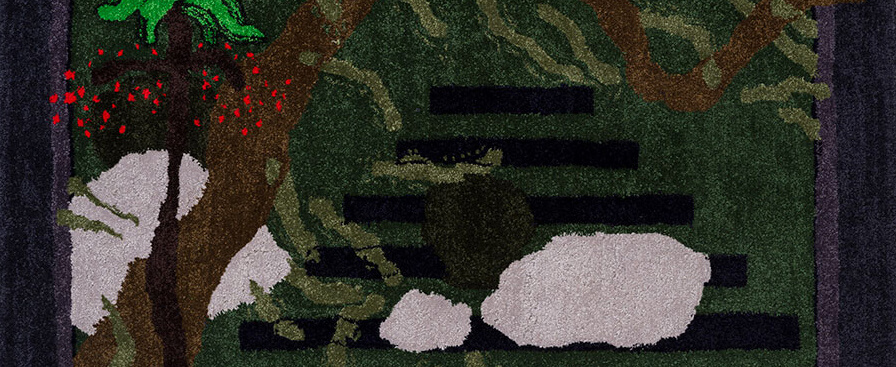
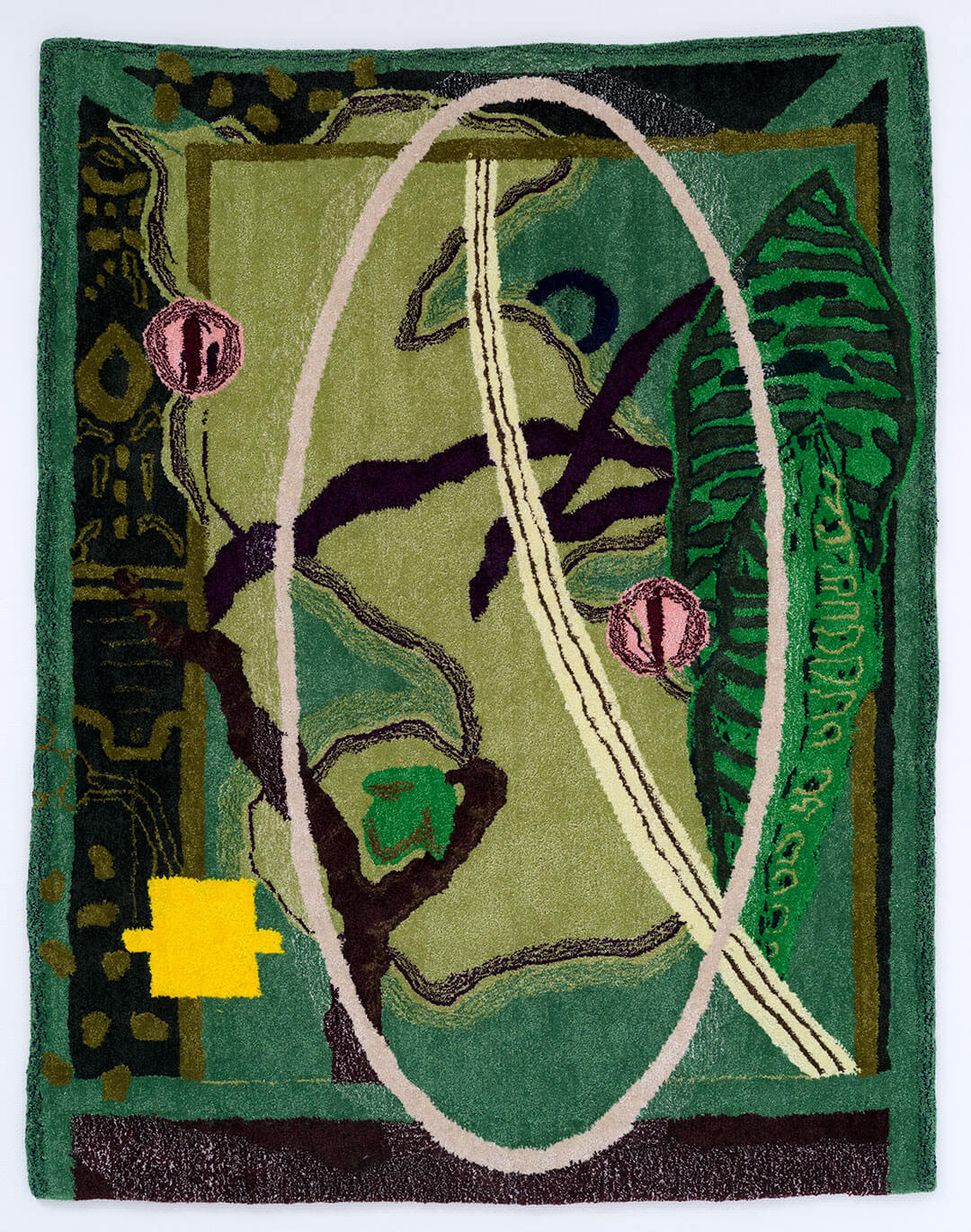
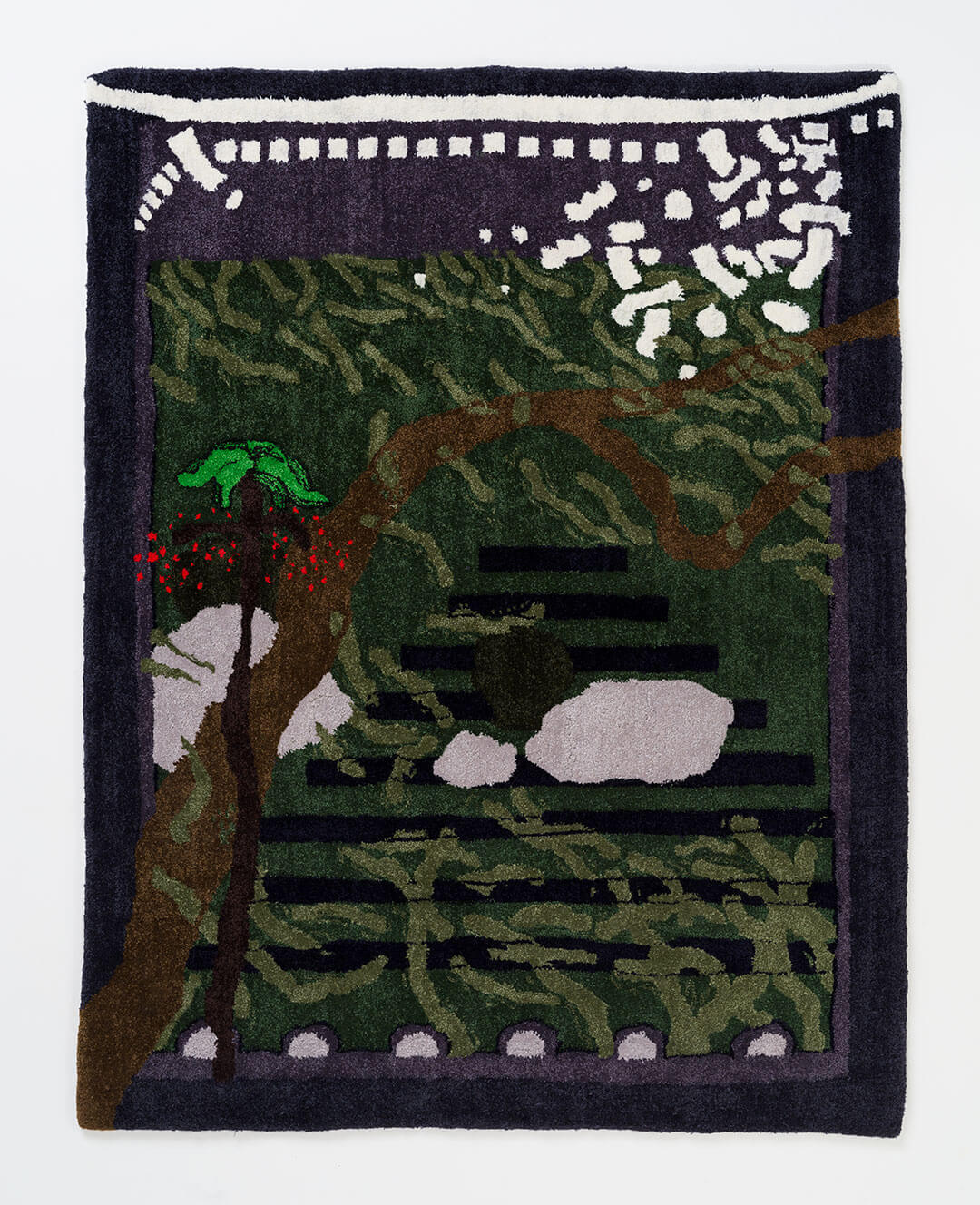
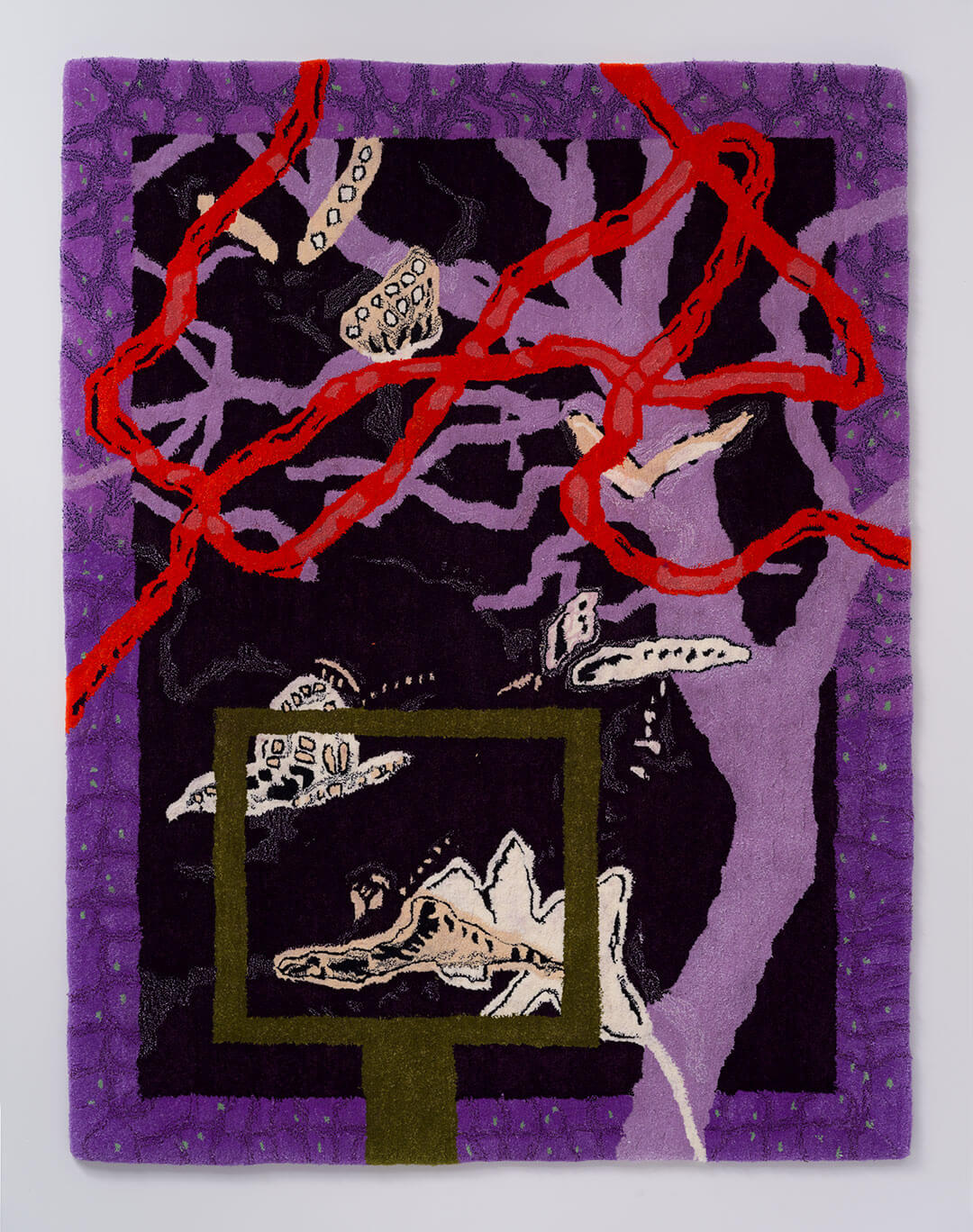
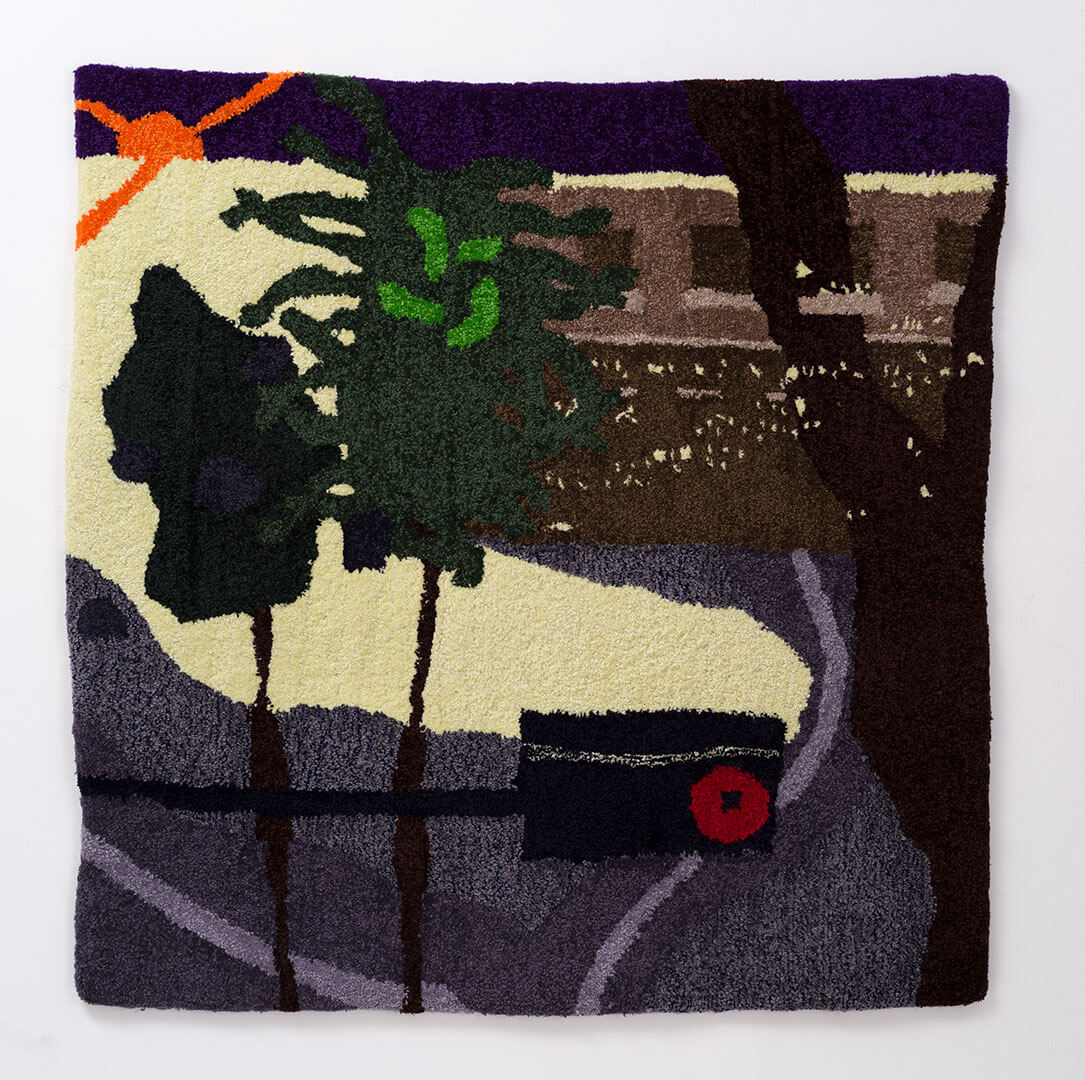
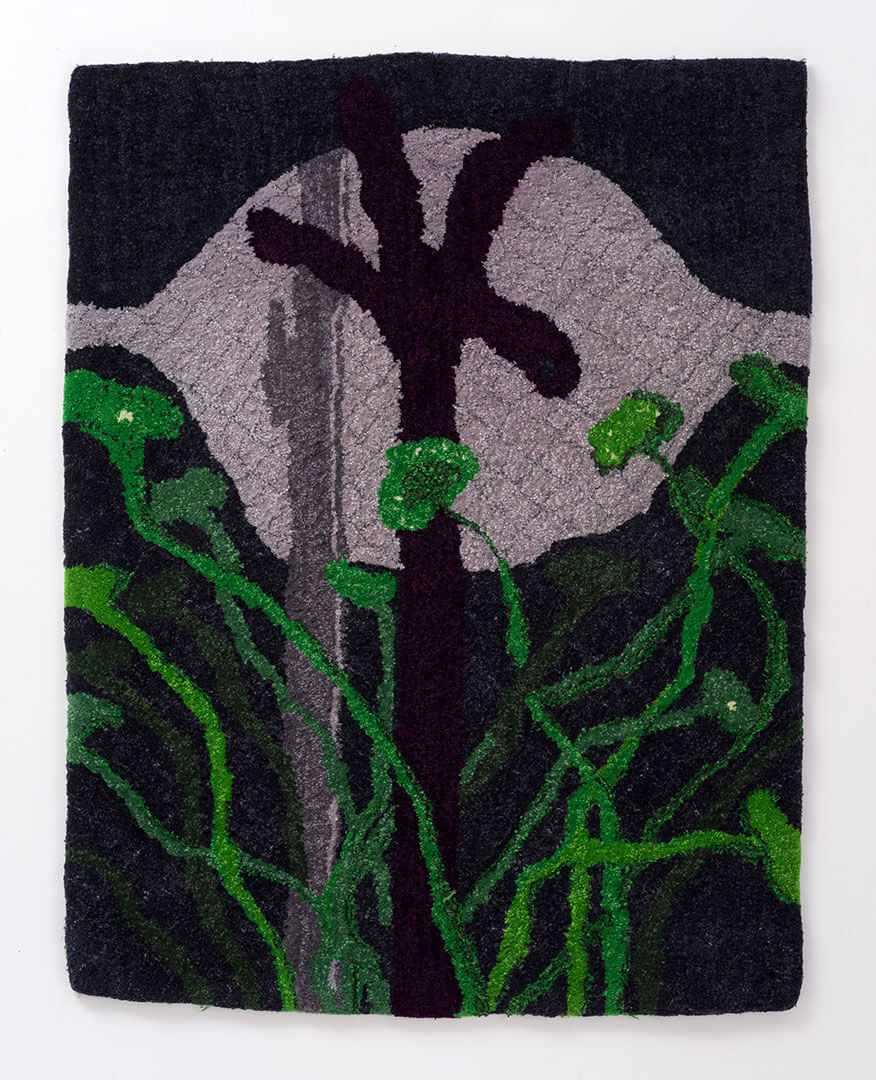




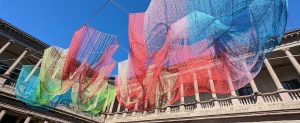
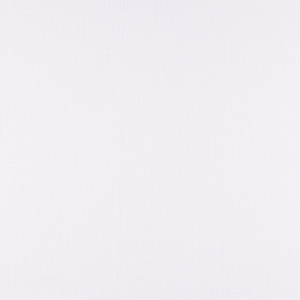


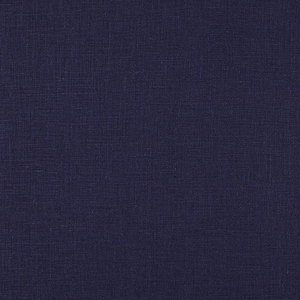





















One Comment
Taryn Yamane
Thank you so much for bringing this artist’s work to our attention Rosie. Her works are so original and reflective of what is at the crux of our collective consciousness at this moment, especially with AI looming over us all. I love that she is self taught! Thank you too for thoughtfully including in the article links to other fiber artist’s works. That made it easy to view their works featured in your earlier articles.